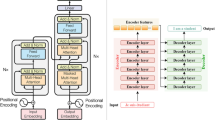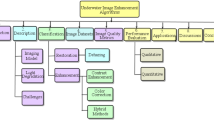Abstract
Random noise attenuation is of great importance to obtain high-quality seismic data. Unsupervised deep learning methods have received much attention for various seismic data processing tasks in recent years. Specifically, the self-supervised deep learning method obtains supervisory information from the data itself, showing its promising denoising ability in various geophysical applications. In this work, a dropout-based self-supervised (DSS) deep learning method is applied for single seismic data random noise attenuation. In the DSS method, single masked noisy data is generated for training and self-supervised loss function construction. The U-shaped convolutional network (U-Net) with a dropout strategy is taken as the main network framework to enhance the denoising stability and reduce the over-fitting effectively. Compared with the traditional f-x deconvolution (FX-Decon) and deep image prior (DIP) method, the DSS method achieves better denoising results in preserving details for synthetic seismic data and field data. Moreover, numerical experiments indicate that the DSS method is stable for seismic denoising and reduces the over-fitting phenomenon.


















Similar content being viewed by others
References
Beckouche S, Ma J (2014) Simultaneous dictionary learning and denoising for seismic data. Geophysics 79(3):A27–A31
Fang W, Fu L, Zhang M, Li Z (2021) Seismic data interpolation based on u-net with texture loss. Geophysics 86(1):V41–V54
Fomel S, Liu Y (2010) Seislet transform and seislet frame. Geophysics 75(3):V25–V38
Gao K, Huang L, Zheng Y (2021) Fault detection on seismic structural images using a nested residual u-net. IEEE Transactions on Geoscience and Remote Sensing 60. https://doi.org/10.1109/TGRS.2021.3073840
Gulunay N (1986) Fxdecon and complex wiener prediction filter. In SEG Technical Program Expanded Abstracts 1986, Society of Exploration Geophysicists, 279–281
He K, Zhang X, Ren S, Sun J (2016) Deep residual learning for image recognition. In Proceedings of the IEEE conference on computer vision and pattern recognition, 770–778
Hennenfent G, Herrmann FJ (2006) Seismic denoising with nonuniformly sampled curvelets. Computing in Science & Engineering 8(3):16–25
Hodgson L, Whitcombe D, Lancaster S, Lecocq P (2002) Frequency slice filtering-a novel method of seismic noise attenuation. In SEG Technical Program Expanded Abstracts 2002, Society of Exploration Geophysicists, 2214–2216
Jafarpour B, Goyal VK, McLaughlin DB, Freeman WT (2009) Transform-domain sparsity regularization for inverse problems in geosciences. Geophysics 74(5):R69–R83
Jin Y, Wu X, Chen J, Han Z, Hu W (2018) Seismic data denoising by deep-residual networks. In SEG Technical Program Expanded Abstracts 2018, Society of Exploration Geophysicists, 4593–4597
Jo H, Pyrcz MJ (2022) Automatic semivariogram modeling by convolutional neural network. Mathematical Geosciences 54(1):177–205
Kingma D P, Ba J (2014) Adam: A method for stochastic optimization. arXiv preprint arXiv:1412.6980
Krull A, Buchholz T O, Jug F (2019) Noise2void-learning denoising from single noisy images. In Proceedings of the IEEE/CVF Conference on Computer Vision and Pattern Recognition, 2129–2137
Laine S, Karras T, Lehtinen J, Aila T (2019) High-quality self-supervised deep image denoising. Advances in Neural Information Processing Systems 32
Le Bouteiller P, Charléty J (2020) Semi-supervised multi-facies object retrieval in seismic data. Mathematical Geosciences 52(6):817–846
Lehtinen J, Munkberg J, Hasselgren J, Laine S, Karras T, Aittala M, Aila T (2018) Noise2noise: Learning image restoration without clean data. arXiv preprint arXiv:1803.04189
Liu D, Deng Z, Wang C, Wang X, Chen W (2022) An unsupervised deep learning method for denoising prestack random noise. IEEE Geoscience and Remote Sensing Letters 19. https://doi.org/10.1109/LGRS.2020.3019400
Liu D, Wang W, Wang X, Wang C, Pei J, Chen W (2019) Poststack seismic data denoising based on 3-d convolutional neural network. IEEE Transactions on Geoscience and Remote Sensing 58(3):1598–1629
Liu G, Reda F A, Shih K J, Wang T C, Tao A, Catanzaro B (2018) Image inpainting for irregular holes using partial convolutions. In Proceedings of the European Conference on Computer Vision (ECCV), 85–100
Liu Q, Fu L, Zhang M (2021) Deep-seismic-prior-based reconstruction of seismic data using convolutional neural networks. Geophysics 86(2):V131–V142
Meng F, Fan Q, Li Y (2021) Self-supervised learning for seismic data reconstruction and denoising. IEEE Geoscience and Remote Sensing Letters 19. https://doi.org/10.1109/LGRS.2021.3068132
Mosser L, Dubrule O, Blunt MJ (2020) Stochastic seismic waveform inversion using generative adversarial networks as a geological prior. Mathematical Geosciences 52(1):53–79
Murray N, Perronnin F (2014) Generalized max pooling. In Proceedings of the IEEE conference on computer vision and pattern recognition, 2473–2480
Naghizadeh M, Innanen KA (2011) Seismic data interpolation using a fast generalized fourier transform. Geophysics 76(1):V1–V10
Nazari Siahsar MA, Gholtashi S, Kahoo AR, Marvi H, Ahmadifard A (2016) Sparse time-frequency representation for seismic noise reduction using low-rank and sparse decomposition. Geophysics 81(2):V117–V124
Oliveira DA, Semin DG, Zaytsev S (2020) Self-supervised ground-roll noise attenuation using self-labeling and paired data synthesis. IEEE Transactions on Geoscience and Remote Sensing 59(8):7147–7159
Qiu C, Wu B, Liu N, Zhu X, Ren H (2022) Deep learning prior model for unsupervised seismic data random noise attenuation. IEEE Geoscience and Remote Sensing Letters 19:1–5. https://doi.org/10.1109/LGRS.2021.3053760
Quan Y, Chen M, Pang T, Ji H (2020) Self2self with dropout: Learning self-supervised denoising from single image. In Proceedings of the IEEE/CVF Conference on Computer Vision and Pattern Recognition, 1890–1898
Ronneberger O, Fischer P, Brox T (2015) U-net: Convolutional networks for biomedical image segmentation. In International Conference on Medical image computing and computer-assisted intervention, Springer, 234–241
Saad OM, Chen Y (2021) A fully unsupervised and highly generalized deep learning approach for random noise suppression. Geophysical Prospecting 69(4):709–726
Srivastava N, Hinton G, Krizhevsky A, Sutskever I, Salakhutdinov R (2014) Dropout: a simple way to prevent neural networks from overfitting. The journal of machine learning research 15(1):1929–1958
Sun H, Yang F, Ma J (2022) Seismic random noise attenuation via self-supervised transfer learning. IEEE Geoscience and Remote Sensing Letters 19:1–5. https://doi.org/10.1109/LGRS.2022.3146173
Ulyanov D, Vedaldi A, Lempitsky V (2018) Deep image prior. In Proceedings of the IEEE conference on computer vision and pattern recognition, 9446–9454
Wang B, Zhang N, Lu W, Wang J (2019) Deep-learning-based seismic data interpolation: A preliminary result. Geophysics 84(1):V11–V20
Wang C, Zhu Z, Gu H, Wu X, Liu S (2018) Hankel low-rank approximation for seismic noise attenuation. IEEE Transactions on Geoscience and Remote Sensing 57(1):561–573
Wang D, Chen G (2021) Seismic stratum segmentation using an encoder-decoder convolutional neural network. Mathematical Geosciences 53(6):1355–1374
Wang X, Wen B, Ma J (2019) Denoising with weak signal preservation by group-sparsity transform learning. Geophysics 84(6):V351–V368
Wang Z, Bovik AC, Sheikh HR, Simoncelli EP (2004) Image quality assessment: from error visibility to structural similarity. IEEE transactions on image processing 13(4):600–612
Xiong Y, Zuo R (2022) Robust feature extraction for geochemical anomaly recognition using a stacked convolutional denoising autoencoder. Mathematical Geosciences 54(3):623–644
Yang L, Wang S, Chen X, Saad OM, Chen W, Oboué YASI, Chen Y (2021) Unsupervised 3-d random noise attenuation using deep skip autoencoder. IEEE Transactions on Geoscience and Remote Sensing 60. https://doi.org/10.1109/TGRS.2021.3100455
Yu S, Ma J, Wang W (2019) Deep learning for denoising. Geophysics 84(6):V333–V350
Yu S, Ma J, Zhang X, Sacchi MD (2015) Interpolation and denoising of high-dimensional seismic data by learning a tight frame. Geophysics 80(5):V119–V132
Zhang H, Yang X, Ma J (2020) Can learning from natural image denoising be used for seismic data interpolation? Geophysics 85(4):WA115–WA136
Zhang K, Zuo W, Chen Y, Meng D, Zhang L (2017) Beyond a gaussian denoiser: Residual learning of deep cnn for image denoising. IEEE transactions on image processing 26(7):3142–3155
Zhang X, Zou Y, Shi W (2017b) Dilated convolution neural network with leakyrelu for environmental sound classification. In 2017 22nd International Conference on Digital Signal Processing (DSP), IEEE, 1–5
Acknowledgements
We are grateful for two reviewers’ comments and suggestions, which improved this paper. This study was supported by the National Natural Science Foundation of China under grant nos. 42204124 and 42230806, Beijing Natural Science Foundation no. Z210001, and the Fundamental Research Funds for the Central Universities no. 2021JBM044 and HIT.OCEF.2021019.
Author information
Authors and Affiliations
Corresponding author
Ethics declarations
Conflict of interest
The authors have no conflicts of interest to declare that are relevant to the content of this article.
Rights and permissions
Springer Nature or its licensor (e.g. a society or other partner) holds exclusive rights to this article under a publishing agreement with the author(s) or other rightsholder(s); author self-archiving of the accepted manuscript version of this article is solely governed by the terms of such publishing agreement and applicable law.
About this article
Cite this article
Wang, X., Sui, Y., Wang, W. et al. Random Noise Attenuation by Self-supervised Learning from Single Seismic Data. Math Geosci 55, 401–422 (2023). https://doi.org/10.1007/s11004-022-10032-y
Received:
Accepted:
Published:
Issue Date:
DOI: https://doi.org/10.1007/s11004-022-10032-y




